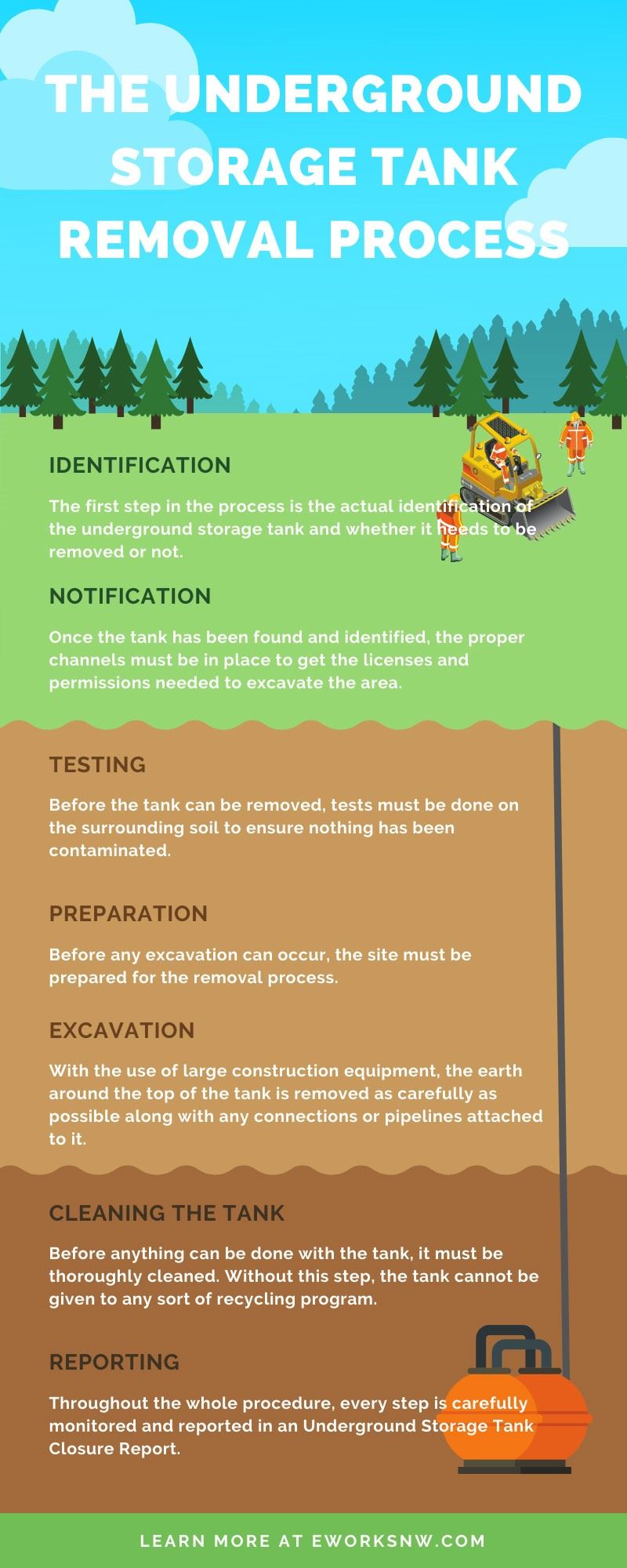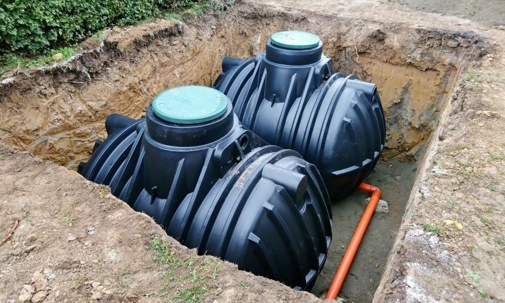Perhaps you have just bought a new gas station or store that you want to run, or maybe you have chosen a location for a new building. One issue that you could run into is the discovery of an unknown underground storage tank. These underground storage tanks could be a real problem if they are brought up to current environmental protection standards. Removing these underground tanks is an undertaking that is more complicated than one would think off-hand, as it is not as simple as digging it up and throwing it away. Here we will explore the underground storage tank removal process.
Identification
The first step in the process is the actual identification of the underground storage tank and whether it needs to be removed or not. The purpose of underground storage tank inspection is to determine if the tank meets environmental protection standards, as well as what they contain. Older underground storage tanks have the possibility of leaking their contents into the surrounding soil and groundwater. With this knowledge, underground storage tank removal is held to extremely high standards of environmental safety.
Notification
Once the tank has been found and identified, the proper notifications to regulatory authorities are needed to excavate the area. This must be done weeks in advance of any action being taken on the underground storage tank in order to comply with regulations. Because of the strict laws governing environmental work, it is important that all the correct permits are gathered, and the correct procedures are in place for the removal of any hazardous material and dealing with any leaks that are found.
Testing
After the tank is removed, tests must be done on the surrounding soil to ensure nothing has been contaminated. Underground storage tanks can often have solvents or contaminated wastewater that can leak into the surrounding soil should the tank integrity fail. If the soil is found to be contaminated by the contents of the underground storage tank, the site may need to undergo remediation after the removal can take place. Environmental Works provides you with soil testing as well as gathering the correct permits needed to remove your underground storage tank.
Preparation
Before any excavation can occur, the site must be prepared for the removal process. Most of these steps involve determining the contents of the tank and understanding any potential hazards that the contents might have when excavating. Setting up the area around the excavation site to protect workers and bystanders alike is also an important step that cannot be skipped. Road signs are put up, equipment is hauled in, and the removal process can start in earnest.
Preventing Combustion
If the underground storage tank is found to have been holding a combustible material, the tank must be flushed of the flammable gases and replaced with inert, non-combustible gas. This can be done with dry ice that introduces carbon dioxide into the tank, thereby displacing any oxygen or other dangerous vaporized material from within. This is done, combined with prohibiting the presence of flame or sparks, to reduce the likelihood of an explosion in the removal process.
Excavation
With the use of large construction equipment, the earth around the top of the tank is removed as carefully as possible along with any connections or pipelines attached to it. The tank is secured with chains and lifted from the ground. If the tank is especially large, a crane may need to be erected to safely remove it.
As stated above, soil sampling is an integral part of underground storage tank removal. If the soil is found to be free of hazardous material or contamination remedial excavation can be avoided. Otherwise, the soil will need to be properly disposed of under hazardous material guidelines.
Cleaning the Tank
Before anything can be done with the tank, it must be thoroughly cleaned. Without this step, the tank cannot be recycled. Once it has been cleaned, the tank is then either cut up on-site to allow for easier removal or shipped as a whole to a facility that recycles old metal.
Reporting
Throughout the whole procedure, every step is carefully documented and reported in an Underground Storage Tank Closure Report. This report will include everything, from soil sampling and ground water sampling data to the final documentation of where it was disposed of. The project cannot be considered completed until it has been reported to the correct authorities.
Abandonment in Place
It is a rare occurrence where an underground storage tank cannot be removed for some reason. This is usually due to it being underneath an already erected building or beneath a retaining wall. In order to maintain structural integrity, there are ways to safely abandon an underground storage tank in place. The steps are similar to the removal process, beginning with making sure the tank is inert and safe to enter before cleaning is done. Requirements for soil sampling are also the same as if you were to remove the tank. Abandonment is usually completed by filling the underground storage tank with another inert, non-shrinking substance such as sand or a concrete slurry.
Hopefully, this deep dive into the process of removing underground storage tanks has shed some light on this very real problem that property owners might face. Not only does it prevent any future problems with ground contamination that the property owner will have to deal with, but it also increases the resale value of that property. Do not wait until it is too late and your ground has been completely contaminated by a leaking storage tank. The cost of contamination remediation skyrockets the longer that the problem goes undealt with.
The discovery of an underground storage tank can seem like a large undertaking, and that is why we are here to help you through it. Environmental Works has the experience and expertise that you can rely on when an underground storage tank rears its ugly head. From underground storage tank inspection all the way to complete removal, we will be with you through the entire underground storage tank removal process.


